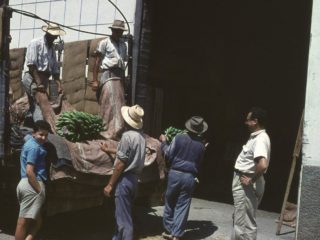 It is said that the more things change, the more they stay the same. It’s also true, that no matter how much we are separated by time, space or culture, throughout history humans have invented and enjoyed telling the same kind of legends. Tales of giants have been told down the ages across Europe, Latin America, much of Asia, India”¦
It is said that the more things change, the more they stay the same. It’s also true, that no matter how much we are separated by time, space or culture, throughout history humans have invented and enjoyed telling the same kind of legends. Tales of giants have been told down the ages across Europe, Latin America, much of Asia, India”¦
The 1760 publication “˜The Modern Part of an Universal History: From the Earliest Account of Time‘ is a collection of essays by authors of the period. This passage, which describes the memoirs of adventurer Sir Edmund Scorey, illustrates that in long ago Tenerife, the Guanches also told tall tales of giant ancestors. And according to the writer’s description of the desecration of the “˜corpse’, yesterday’s travellers showed no more respect for the culture of others than many do today.
The Guanches of Tenerife, in particular, were well-made, handsome, and robust; nay, in general, of a gigantic stature. There was, in Scorey’s time, the skull of one of them to be seen in the sepulchre of the Guimar kings, which had eighty teeth, and the skeleton of the body measuring fifteen feet; but Scorey does not pretend that he had seen it; and it is probable it was little more than the tradition of the natives, who might have such tales of their ancestors as are common among the vulgar of all countries.
Several gentlemen being one day employed in hunting a rabbit, the little animal run into a cave, and was pursued by one of the company, who, upon entering in a hurry, was terrified with the sight of a corpse of a gigantic stature. His cries alarmed the company; but, before their arrival, recollecting that it was a sepulchral cave of the Guanches, his fears were dissipated. Upon this, he cut off a piece of skin from the breast of the body, which your author had seen, and affirms was softer, smoother, tougher, stronger and more pliable, than the best-prepared kid-skin which probably was no other than the goat-fleece in which they wrapped the embalmed bodies.
We are the more confirmed in this opinion, because a sensible gentleman of the faculty, after residing twenty years in the island, had, with the utmost difficulty, access to the sepulchral caves. This is a favour scarce ever granted, and not attempted without leave, but at the risk of one’s life. He obtained permission, and was even conducted to the tombs, in consequence of the esteem of the people, which he had gained by several services he had done for them in the way of his profession. The following story, which he relates, seems, however, to corroborate the testimony of Scorey.
Related:







